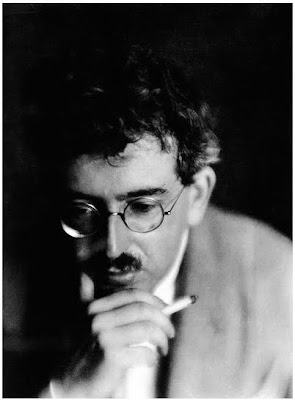Colors
In our garden there was an abandoned, ramshackle summerhouse. I loved it for its stained-glass windows. Whenever I wandered about inside it, passing from one colored pane to the next, I was transformed; I took on the colors of the landscape that — now flaming and now dusty, now smoldering and now sumptuous — lay before me in the window. It was like what happened with my watercolors, when things would take me to their bosom as soon as I overcame them in a moist cloud. Something similar occurred with soap bubbles. I traveled in them throughout the room and mingled in the play of colors of the cupola, until it burst. While considering the sky, a piece of jewelry, or a book, I would lose myself in colors. Children are their prey at every turn. In those days, one could buy chocolate in pretty little crisscrossed packets, in which every square was wrapped separately in colorful tinfoil. The little edifice, which a coarse gold thread kept secure, shone resplendent in its green and gold, blue and orange, red and silver; nowhere were two identically wrapped pieces to be found touching. From out of this sparkling entanglement the colors one day broke upon me, and I am still sensible of the sweetness which my eye imbibed then. It was sweetness of the chocolate, whit which the colors were about to melt — more in my heart than on my tongue. For before I could succumb to the enticements of the treat, the higher sense in me had all at once outflanked the lower and carried me away.
[Walter Benjamin, Selected Writings, Volume 3: 1935-1938, Harvard University Press]
*
The Work of Art in the Age of Mechanical Reproduction
On the Concept of History
Walter Benjamin
Photo by Germaine Krull
A színek
Kertünkben állt egy elhagyatott, korhadt pavilon. Színes ablakai miatt szerettem. Ha üvegtől üveghez osontam odabent, átváltoztam; elszíneződtem, akár a táj, mely hol izzón lobogva, hol meg porlepetten, hol kiaszottan, hol meg dúsan zöldellve terült el az ablakban. Olyan érzés volt, mint vízfestés közben, amikor a dolgok feltárták előttem ölüket, mihelyt nedves felhővel borítottam őket. Hasonló történt a szappanbuborékokban is. Bennük lebegtem végig a szobán, és elvegyültem a gömbhéjon kavargó színek játékában, míg szét nem pattant az egész. Belevesztem a színekbe, akár az égre figyeltem, akár egy ékszerre, akár egy könyv lapjaira. A gyermek, bármely utat jár is, mindig a színek zsákmánya. Akkoriban lehetett kapni olyan csokoládét, keresztben átkötött, csinos kis göngyölegekben, melynek minden táblácskája külön be volt csomagolva színes sztaniolpapírba. A kis építmény, melyet egy érdes tapintású aranyzsinór fogott együvé, zölden és aranyszínűen, kéken és narancssárgán, pirosan és ezüstösen virított; véletlenül sem került egymás mellé két egyforma színbe csomagolt szelet. Ebből a szikrázó összevisszaságból egy szép napon rám törtek a színek, és még ma is érzem azt az édességet, mellyel akkor teleszívta magát szemem. Annak a csokoládénak az édessége volt ez, mellyel együtt a színek inkább a szívemben, mintsem a nyelvemen akartak szétolvadni. Mert mielőtt martalékul estem volna a nyalánkság csábításának, a magasabb rendű érzék egy csapásra túlszárnyalta bennem az alantasabbat, és magával ragadott.
Márton László fordítása
[Walter Benjamin, Egyirányú utca, Berlini gyermekkor a századforduló táján, Atlantisz, 2005, 130. o.]
..............................................................................................................................................................................................................................
